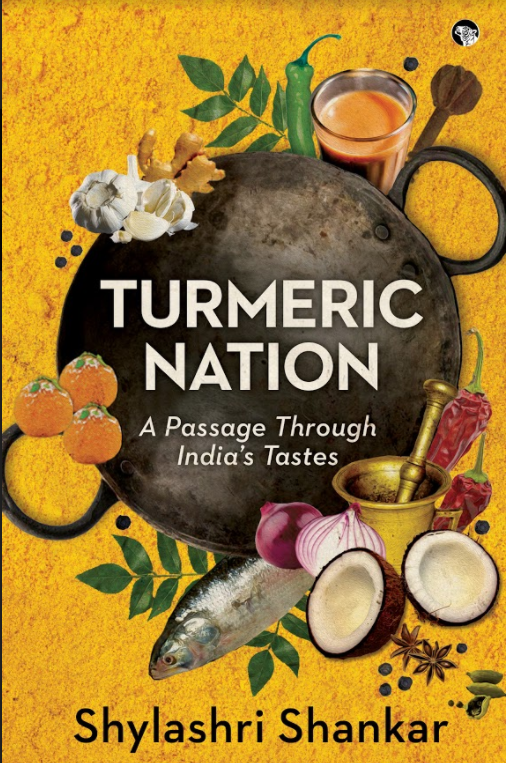Politics and revolutions, my father used to say, usually after a satisfying homecooked meal, are the offspring of the ageless human struggle over food. Civilisations and cities thrive when there’s a surplus of food to sustain a consuming class of royalty, warriors and priests; and they also get uprooted because of revolutions triggered by food deprivation.
Traditional food writing and celebrity-driven television series have for long been singularly focused on the more cultural aspects of food, especially fine food, but, mirroring the rise of the voiceless ‘subaltern’ in historiography, and the growing influence of inter-disciplinary studies, food writers are now increasingly looking beyond chefs and restaurants for inspiration for their stories. Food writing, as Ravindra Khare established a long time ago, has got to simmer in the melting pot of agronomy, anthropology, archaeology, economics, historiography, politics, psychology, religious studies and sociology. There’s no one-dimensional way of looking at it.

It is this holistic approach that makes Shylashri Shankar’s Turmeric Nation: A Passage Through India’s Tastes (Speaking Tiger; Rs 499) not only a pleasure to read, but also a declaration that there are a myriad ways of studying the food culture of a nation. For starters, the most important question to ask in the contemporary context is: Does food have a religion?
Shankar reminds us that the majority of Hindus are non-vegetarian, as reported by a national survey conducted by The Hindu and CNN-IBN back in 2006, and that the per capita consumption of meat and fish has risen from 1 kg in 2004 to 2.5 kg in 2014, and is expected to almost double by 2023. With the same clarity, Shankar approaches contentious issues such as the evolution of the Gau Raksha Movement and the myths associated with beef eating in India—quoting 2011 data from the National Sample Survey Office (NSSO), she points out that 13.5 million Hindus (70-80 per cent of whom were Dalits) said they had eaten beef in the month preceding the survey, whereas among Muslims, the percentage was only 42 per cent.
Beef consumption, clearly, is not the prerogative of the followers of a particular religion. Chroniclers of India’s food culture must therefore take a more rounded, and less political, view of their subject, which embodies the luxuriant diversity of their country.
It is this diversity that is brought alive in Shankar’s book as it moves seamlessly from the Buddha’s ‘last supper’ to an analysis of a Dalit wedding feast centred around pork, to the as-yet unexplored world of Indian cookbooks, to what each family stores in its refrigerator, and many, many more intriguing facets of what we eat and how we do so.
The section on cookbooks has the delicious story, based on a memory shared by Rukmini Srinivas in her book Tiffin, of the author R.K. Narayan mistaking the pepperoni in a pizza for tomatoes on a visit to Berkeley and after realising his mistake, asking for a ‘cleansing meal’ rice and yoghurt from Srinivas, who’s also the wife of the famous sociologist M.N. Srinivas. Titbits like this one abound in the book, which doesn’t let you off its pages for a moment.
A book of this intellectual breadth and inter-disciplinary depth could have come only from an inveterate scholar such as Shankar, who’s a Senior Fellow at the Centre for Policy Research, whose published work spans subjects as diverse as judicial activism, ethnic conflict and political impact of anti-poverty programmes. She has created a new genre of food writing in India.
The Bong Mom turns novelist
From Joanne Harris’s lusciously layered Chocolate to Chitra Banerjee Divakaruni’s The Mistress of Spices, which seamlessly moves from a magical world to thegritty underbelly of the Indian immigrant experience in America, to poet-nuclear radiologist Amit Majmudar’s The Abundance,the emotions stirred up by food have enriched the narrative of many a work of fiction that stay on forever in the D Drive of our memory.
The next in the queue is Sandeepa Mukherjee Datta’s Those Delicious Letters (HarperCollins; Rs 299). In the world of food bloggers, Mukherjee Datta, a New Jersey-based electronics engineer, is regarded as a pioneer, better known by her nom de plume, The Bong Mom, whose recipes and stories woven around food have been devoured since 2006 by her many followers around the world. In Those Delicious Letters, the recipesprovide the backdrop of hope to the US-based, just-turned-40, mother-of-three Shubha (Shubhalaxmi Sen-Gupta), whose marriage with Sameer seems to be collapsing—at least in her imagination.
Out of the blue, she starts getting an aerogramme (remember those letters we used to receive from home when we were students in America) each month from a elderly relative who identifies herself as Didan and sends her two seasonal recipes per letter. Yes, Didan has a postal address, Panchanantala Lane, Baranagar, Kolkata, but Shubha just can’t figure out who she is.
The mystery about Didan’s identity doesn’t stop Shubha from replicating the recipes that Didan keeps feeding her—from hinger kochuri (kachoris redolent of hing—asafoetida) to aloor dom (the Bengali dum aloo), potoler dolma (pointed gourd dolma— an Armenian contribution to Bengali cuisine—stuffed with either mutton or paneer mince) and mochaar ghanta (a vegetarian preparation made with banana flowers). Didan’s recipes stir up the pot at Shubha’s kitchen and make her quite a Facebook star among her friends.
The truly delicious part of the novel, however, comes at the end, when it gets revealed who Didan is and the effect is has on Shubha’s marriage with Sameer. In this story of unsure love, longing and redemption through food, the winner is Didan, and the many other unknown custodians of our country’s culinary culture like her. As Shubha learns, Didan’s recipes, drawn from her aging memory, have a more healing effect on her emotional wounds than the many bits of advice she keep picking up from online relationship counsellors.
Lockdown Discovery
With more people starting to order in food, giving a real boost to the home delivery business of restaurants, Jatin Mallick at Tres, the European fine-dining restaurant at Lodi Colony Market, has realised that ‘soul dining’ is fast replacing fine dining. “Comfort food is in, showmanship is out,” declares the chef, who’s otherwise known for his fine cuisine.
We were talking about Juju Chicken, which we discovered during Lockdown and has now become a family favourite. Juju is what Mallick’s business partner, and acclaimed chef, Julia Carmen Dsa, is fondly called back home in Goa. The distinctive taste of the chicken—all thigh pieces— comes from Julia’s home-made spice mix. The thigh pieces are kept in a brine solution overnight, marinated in the spice mix for six hours, cooked gently using the sous vide technique in a hot water bath for a couple of hours, and then grilled in the Spanish Josper oven, which the restaurant loves to flaunt.
The elaborate process ensures the chicken remains moist and juicy for three to four hours, making it ideal for home delivery. Mallick first tasted success with the Juju Chicken at the last Palate Fest, where they sold more than 1,000 portions of it, so when Lockdown presented an opportunity, he added it to his home delivery menu. And yes, to borrow from KFC’s now-former tagline, people found Juju Chicken to be finger-lickingly good.
Sourish Bhattacharyya has been writing about food and drinks for the past two decades. He is also co-editing with Colleen Taylor Sen The Companion to Indian Food for Bloomsbury, UK, which is scheduled to come out in 2022.






















